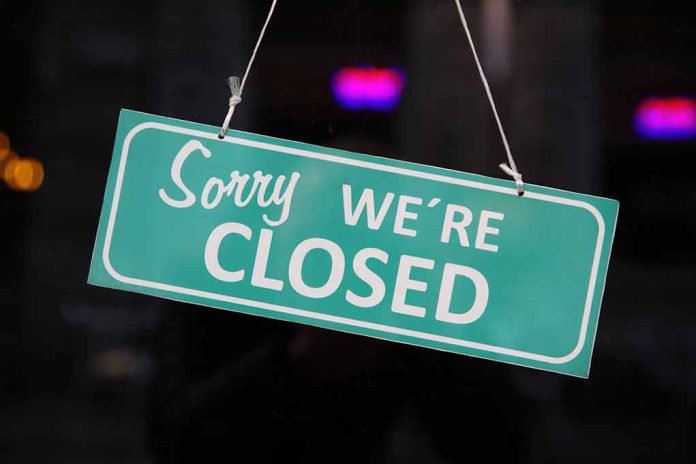
The retail landscape is changing rapidly, and Walgreens is taking drastic steps to adapt.
At a Glance
- Walgreens plans to shutter 1,200 stores over the next three years to manage economic challenges.
- About 500 store closures are slated for fiscal year 2025, commencing with underperforming locations.
- The company aims to streamline operations amidst competition from Amazon and online platforms.
- Walgreens recorded a net loss of $3 billion last quarter, despite a 6% increase in annual revenue.
Closing of 1,200 Stores
Walgreens, the U.S.-based pharmacy chain, will close about 1,200 locations over the next three years, as part of an effort to navigate significant economic challenges and a competitive retail environment. CEO Tim Wentworth announced that this closure plan aims to offset a substantial $3 billion quarterly loss.
The decision to close these stores is influenced by dwindling consumer spending, increasing pressures from online competitors such as Amazon, and declining prescription drug reimbursement rates. Walgreens’ strategy includes selling a portion of its Cencora stake for $1.1 billion, directing future investments towards approximately 6,000 profitable locations.
Streamlining and Strategic Adjustments
About 500 stores targeted for closure in fiscal year 2025 are primarily underperforming or have expiring leases. Walgreens is also curbing its primary care clinic expansions, reviewing the potential sale of its VillageMD clinic business, and cutting its dividend and 2024 forecast to boost cash reserves amid mounting operational costs.
“Walgreens is closing approximately 1,200 locations as the drugstore chain struggles to contend with online competitors and declining prescription drug payments.”
The strategic adjustments follow a broader industry trend, with rivals like CVS Health Corp and Rite Aid Corp also reducing their physical store footprints, which could lead to pharmacy deserts in certain areas. Despite a $3 billion quarterly loss due to opioid litigation settlements and a Chinese pharmaceutical chain writedown, Walgreens exceeded Wall Street’s earnings expectations per share and its quarterly revenue surpassed projections.
Industry Impact and Prospective Outlook
The announcement initially resulted in a 13% increase in Walgreens’ stock value, a rare upswing in a difficult year marked by a nearly 70% decline in stock value. The closures include 300 stores from a prior cost-cutting plan. Walgreens is also responding to inflationary pressures by reducing prices on over 1,000 items to attract budget-conscious consumers.
“This solid base supports our conviction in a retail pharmacy-led model that is relevant to our consumers, and we intend to invest in these stores over the next several years,” said Wentworth, who became CEO nearly a year ago.
Walgreens’ response to market trends and competitive pressures reflects broader changes within the pharmacy retail sector. The shift towards a fewer number of high-performance locations and digital integration is evidenced by Walgreens’ focus on enhancing its remaining stores. Rival companies’ similar actions suggest a restructuring of the industry, leaving many pondering the future landscape of retail pharmacies in America.
Sources
1. Walgreens is closing 1,200 stores
2. Walgreens to close 1,200 stores as US pharmacies struggle to define a new role









